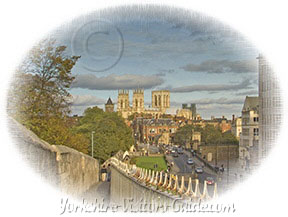
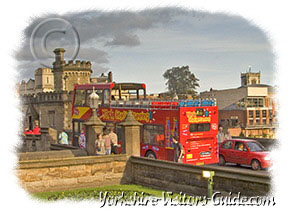
City of York
History Encapsulated
The ancient walls of the City of York encompass an arena – a melting pot – witness to more than two thousand years of turbulent Yorkshire history. Today’s York is a vibrant city catering to the needs and entertainment of its citizens and millions of visitors. Both old and new buildings of the City of York are still dwarfed by the awe-inspiring bulk of York Minster.
Wander a while through the narrow winding streets of York – their timber buildings seem to lean together in embrace. Ignore the modern fashions of fellow visitors – the cleanliness of the gutters.
Let your imagination transport you back – way back – in time. These streets haven’t changed – I mean really changed – in centuries! You’ll walk past inns and taverns – unless yielding to their temptations and venturing inside – that were considered old by the Georgians and Victorians of the eighteenth and nineteenth centuries. The surviving defensive walls and fortified gateways – such an evocative feature of any visit – were established by the Romans in the first century AD – repaired and restored throughout medieval times of harassment and attack from the Scots.
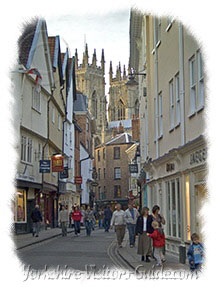
There was nothing much in the way of “civilisation” North of the City of York in those times and the border regions must have seemed much closer than today.
What were the Vikings doing in York?…
Between the time of the Romans in York and the Norman invasion of England it was the turn of the Vikings. We usually think of the Vikings as mighty, merciless warriors – who can forget the performances of Kirk Douglas and Tony Curtis in the 1958 film “The Vikings”.
Their daily schedule seemed to revolve around the rape and pillage of any luckless village they encountered! However, lots of painstaking excavation by dedicated archaeologists beneath the streets of modern day York seems to tell a very different story. True – their much feared galleys were used to raid the coastal fringes of Yorkshire and Lincolnshire.
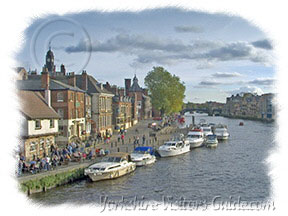
But successful trade and settlement brought about greater prosperity for the Vikings as the warriors brought their women folk and raised families far from sight or smell of the North Sea. They used their galleys to explore further and further inland. The River Ouse, flowing through the City of York and the Humber estuary into the North Sea, formed an important trade route and must have been a very busy waterway.
Are you ready to get your hands dirty?…
Today, you and your family can take a hand at searching for Viking artefacts – pottery, jewellery and maybe a bone or two – at a visitor attraction called, very appropriately, “The Dig”. This is a sister attraction to the world renowned “Jorvik Centre”. Between them they bring alive the history of York and its Viking settlers and certainly give you something to think about. Come face to face with the Vikings in York at the Jorvik Viking Centre (A new window will open so you won’t lose your place. I’ll be waiting for you when you get back!)
City of York – Britains Railway Heritage
The National Railway Museum in the City of York covers over 300 years of railway history. Its collections include over 100 locomotives, some 250 items of rolling stock and thousands of other objects – from posters and tickets to uniforms and silverware. Visitors can enjoy a fun family day out with the kids including an action-packed annual programme of special events and exhibitions. Admission to the museum is free. Click National Railway Museum to read more.
When is a Gate not a Gate? – When it’s a Bar, of course!
A great way to see the buildings and streets of the City of York is by walking the walls. If you get your hands on a street map it’s all laid out for you. But be careful, for there’s always room for confusion with the names of things around here. For example, a street here is called a gate. And a gate is called a bar. But a bar is, of course, a pub! Confused? Well, forgive my toying with you and I’ll try to explain. The “gate” as in Micklegate or Petergate comes from the Viking gata which means street. The grand and well-fortified gateways into the city are called bars from the English meaning a gateway capable of being barred – as in Micklegate Bar and Monk Bar. If you walk all the way round the walls – only about two miles – then you’ll climb up and down a good many steps alongside each of the York Bars.
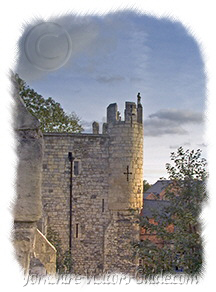
Getting to know the city of York is a fascinating experience. You’ll truly find something here to interest everyone.
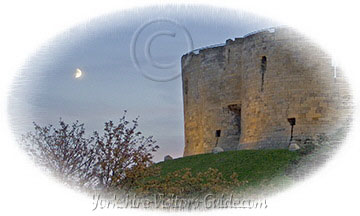
Return from York to Yorkshire History

